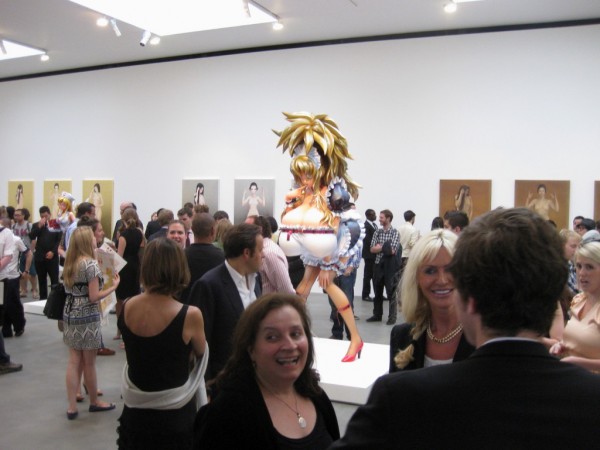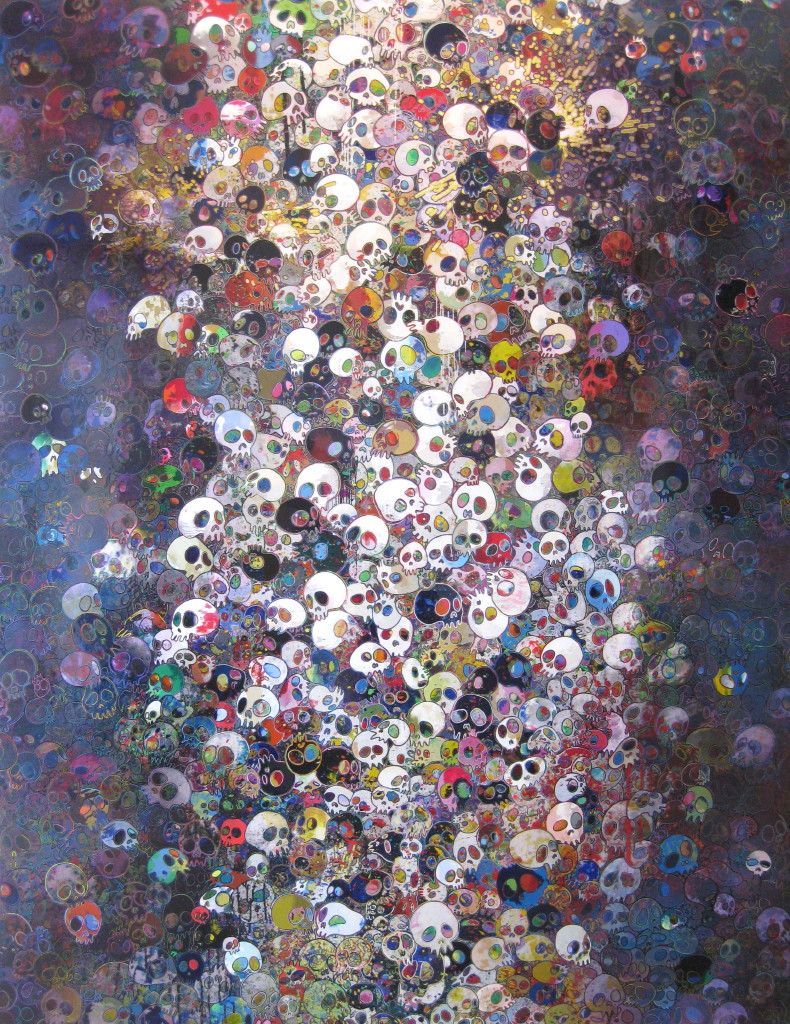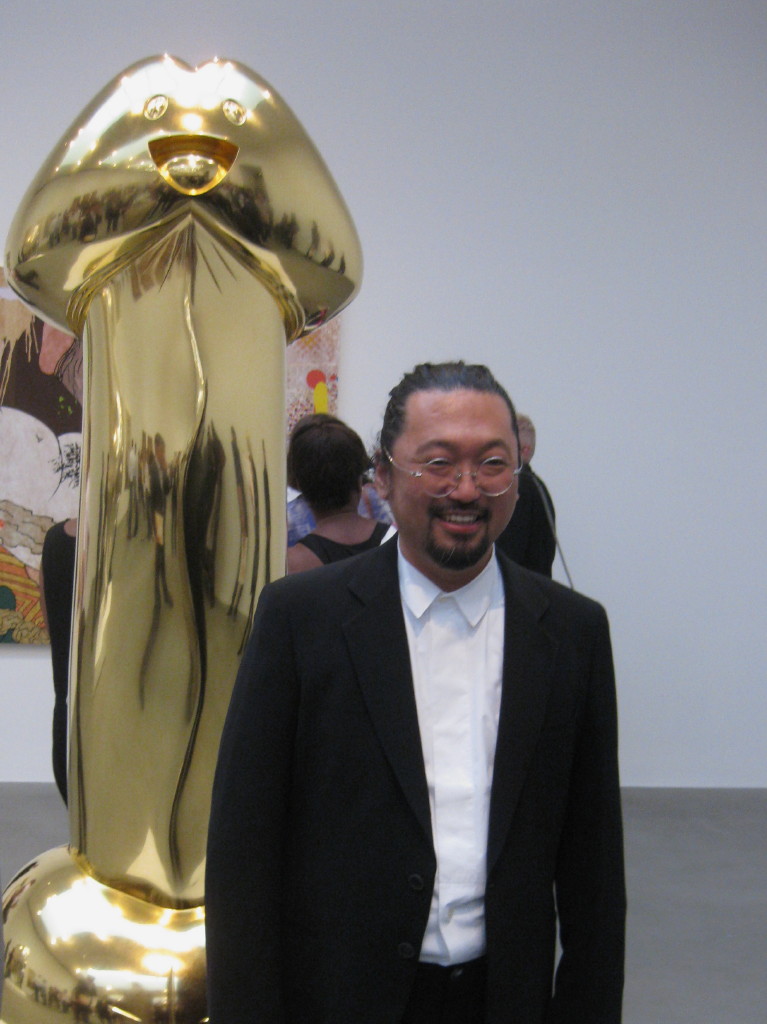For the last five and a half weeks, Gagosian Gallery on Britannia Street (the larger of its two spaces in London) has been hosting a Takashi Murakami exhibition (previewed). The show features five large-scale sculptures along with a group of paintings merging references to both Japanese contemporary society and the country’s artistic heritage. This recent output includes collaborations with manga, animé, figyua and other artists from Japan’s otaku subculture, which some might describe as a curious world of fantasy, self-indulgence, obsession and disengagement. For the most part, Murakami’s new work centres around sexuality, in particular what the artist describes as “the Japanese male sexual complex”.
So, what can this visitor say about the exhibition? It’s considered and thematically consistent. The artspeak press release was a good read. As for the actual work on display, I understood it — I just didn’t get it. This could be down to jaded sensibilities or some cultural barrier, but it did seem like a lot of thought and effort went into creating a new body of work which ultimately — even in 3D — fell Superflat. [Yes, that last quip was too easy. It was beyond my control.] The exhibition closes on Friday, 5 August.
More commentary from Patrick Nguyen and other snapshots from the opening after the jump.
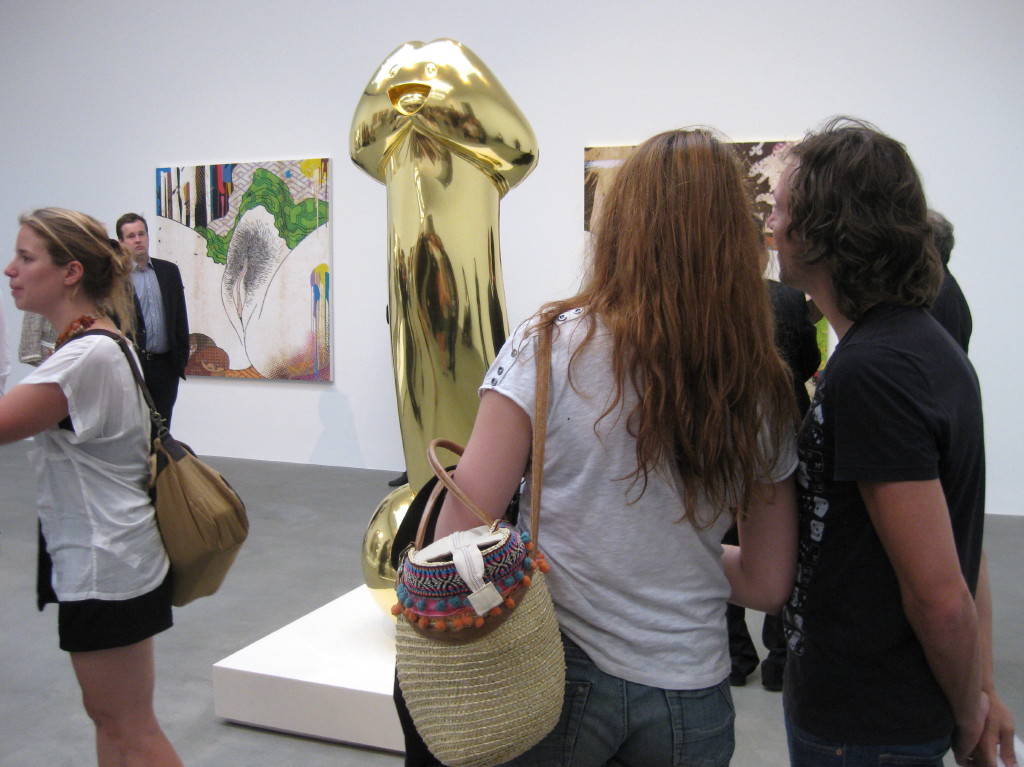
Sculpture: 'Mr. Big Mushroom'. Aluminium and gold leaf. 210 cm (h); Canvas (left): 'Shunga: Bow Wow'. Acrylic on canvas mounted on board. 175.3 cm x 170.2 cm

Murakami's dealers in LA, Tim Blum and Jeff Poe, in the background speaking with Teriha Yaegashi of Kaikai Kiki. Canvases: 'An Homage To Seiki Kuroda "Wisdom, Impression, Sentiment"' (KEI and Kaikai Kiki Factory). Acrylic, gold leaf and platinum leaf on canvas mounted on aluminium frame. Each panel 180.6 cm x 99.8 cm
A key part of the exhibition consists of four triptychs. Each is a take on Kuroda Seiki’s Wisdom, Impression, Sentiment, awarded silver medal when exhibited by Kuroda at the Exposition Universelle of 1900, a world’s fair held that year in Paris. According to Gagosian Gallery, “Murakami consciously reclaims it in a new iteration by applying traditional nihonga techniques like gold- and silver-leafing, as well as recasting the realistically rendered nude figures in contemporary manga style.” Perhaps this is being too demanding, but the idea felt rather tired and the works themselves failed to retain interest.
Among the sculptures are 3m Girl and Nurse Ko2. These are essentially hentai fantasy figures: overtly sexual, female characters with exaggerated or even ridiculous proportions and the obligatory kawaii (cute) aesthetic, i.e. child-like facial features. They’re kitsch, Japan-centric and slightly creepy. Although obvious parallels exist in the West with the pneumatic and non-threatening, cartoon-like women — epitomised by Pamela Anderson — who rose to prominence during the nineties, that subject matter hardly remains a topical one. As with a number of the other works on display, it was therefore unclear what relevance such sculptures were expected to hold today for a non-Japanese viewer who’s never been immersed in Japanese contemporary culture.
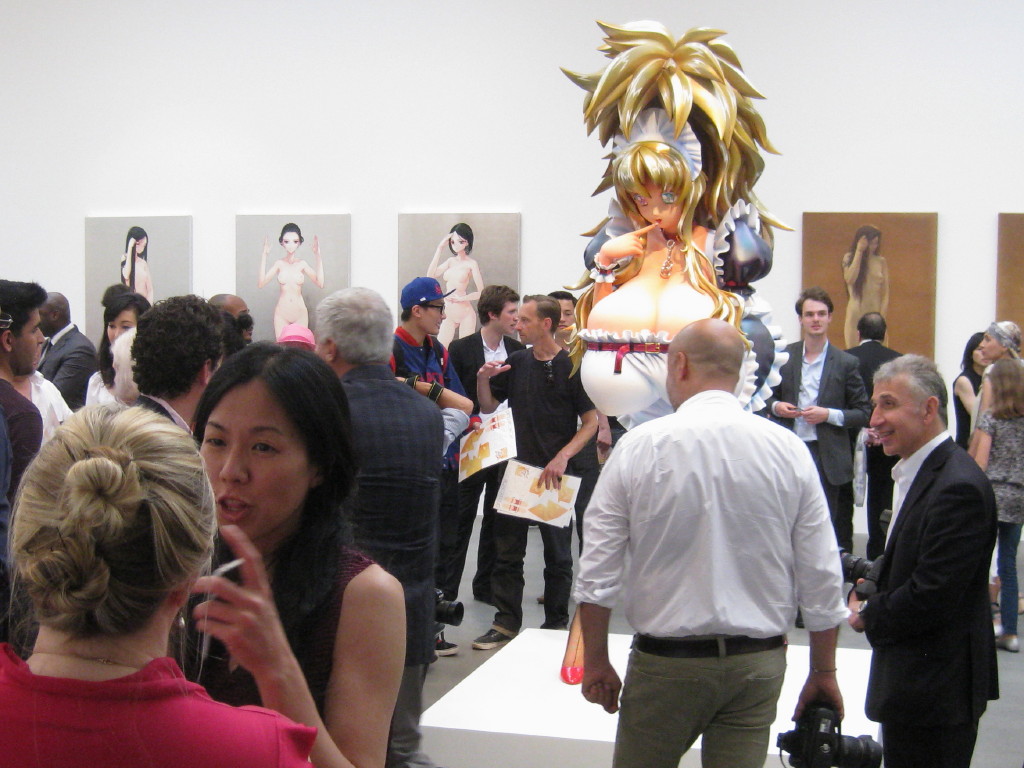
Sculpture: '3m Girl'. Stainless steel, fibreglass, urethane paint, epoxy resin, leafing, net tights. 270 cm x 97 cm x 120 cm

'Nurse Ko2'. Carbon and urethane paint, transparent epoxy resin, eyeglasses, aluminium, book. 178 cm (h)
Many will no doubt be more receptive to Murakami’s new work than I was. If you’ve managed to see the exhibition in person, do post your thoughts about it below. They’ll be read with interest.
All artwork (C) Takashi Murakami/Kaikai Kiki Co., Ltd. All Rights Reserved
Text and photographs by Patrick Nguyen.




